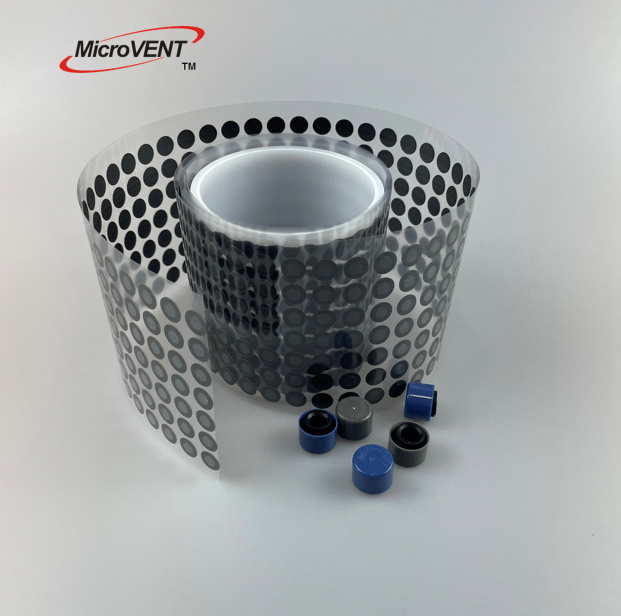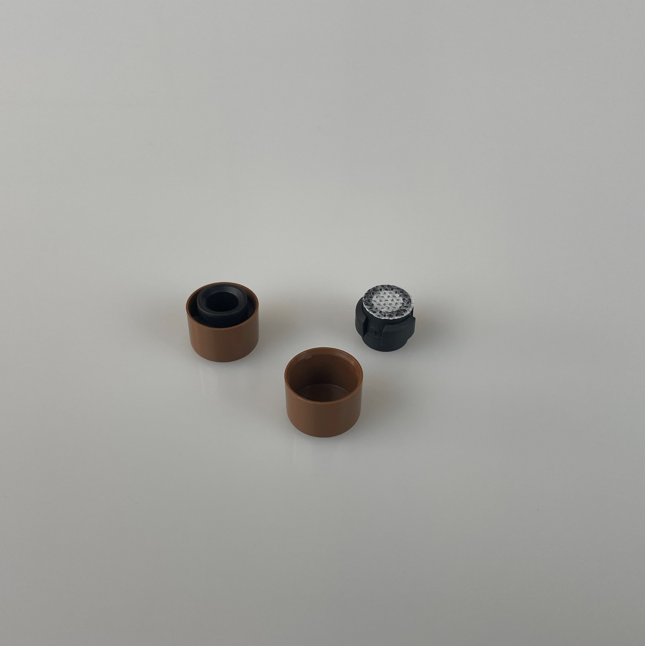Essential Guide to Acoustic Membrane Installation
The installation of a MicroVENT vent ePTFE membrane represents a crucial step in optimizing acoustic performance while maintaining proper pressure equalization in electronic devices. This comprehensive guide will walk you through the entire installation process, providing expert insights and professional techniques to ensure optimal results. Whether you're working on consumer electronics, automotive applications, or industrial equipment, proper installation is key to achieving the desired acoustic and protective properties.
Understanding ePTFE Membrane Technology
Structure and Properties
The MicroVENT vent ePTFE membrane is engineered with a unique microscopic structure that allows for effective pressure equalization while maintaining excellent acoustic properties. The expanded polytetrafluoroethylene (ePTFE) material features millions of tiny pores that permit air passage while blocking water, dust, and other contaminants. This sophisticated membrane structure is what makes it ideal for acoustic applications where both sound transmission and environmental protection are crucial.
Benefits in Acoustic Applications
When properly installed, a MicroVENT vent ePTFE membrane provides superior acoustic performance by managing sound waves while maintaining necessary airflow. The membrane's structure helps reduce distortion and maintains clarity in audio output, making it particularly valuable in applications such as speakers, microphones, and other sound-sensitive devices. Additionally, the membrane's protective properties ensure long-term device reliability by preventing moisture and contaminant ingress.
Pre-Installation Preparation
Surface Preparation Requirements
Before installing the MicroVENT vent ePTFE membrane, proper surface preparation is essential. The mounting surface must be clean, dry, and free from any oils, dust, or debris that could compromise adhesion. Use isopropyl alcohol to clean the surface thoroughly and allow it to dry completely. The ambient temperature should be between 20-25°C (68-77°F) for optimal adhesive performance.
Tool and Material Checklist
Gather all necessary tools and materials before beginning the installation. You'll need clean lint-free gloves, isopropyl alcohol, cleaning wipes, application tools (such as rollers or squeegees), and the MicroVENT vent ePTFE membrane itself. Having everything prepared beforehand ensures a smooth installation process and helps prevent contamination of the membrane surface.
Installation Process Steps
Membrane Positioning
Careful positioning of the MicroVENT vent ePTFE membrane is crucial for optimal performance. Begin by identifying the exact location where the membrane will be installed. Consider factors such as airflow patterns, acoustic requirements, and any potential interference with other components. The membrane should be centered over the vent opening with equal margins on all sides to ensure proper sealing.
Application Technique
When applying the MicroVENT vent ePTFE membrane, use steady, even pressure to prevent air bubbles and ensure complete adhesion. Start from the center and work outward in a systematic pattern. This technique helps eliminate trapped air and creates a consistent seal around the entire perimeter. Take care not to stretch or distort the membrane during application, as this could affect its performance characteristics.

Securing and Sealing
After initial placement, use appropriate tools to firmly secure the edges of the MicroVENT vent ePTFE membrane. Apply additional pressure around the perimeter to ensure a complete seal. Some applications may require specific sealing methods or additional components depending on the environmental conditions and performance requirements. Follow manufacturer guidelines for any additional sealing procedures.
Quality Control and Testing
Visual Inspection Methods
After installation, conduct a thorough visual inspection of the MicroVENT vent ePTFE membrane. Look for any signs of wrinkles, bubbles, or incomplete adhesion. The membrane should appear smooth and uniform across its entire surface. Pay special attention to the edges and corners where sealing is particularly important. Document any observations as part of the quality control process.
Performance Verification
Perform necessary acoustic and pressure equalization tests to verify proper installation and function of the MicroVENT vent ePTFE membrane. This may include sound transmission tests, pressure differential measurements, and environmental protection verification. These tests ensure the membrane is performing as intended and meeting all specified requirements for the application.
Maintenance and Long-term Care
Regular Inspection Guidelines
Establish a routine inspection schedule for installed MicroVENT vent ePTFE membranes. Regular checks help identify any potential issues before they become problems. Look for signs of wear, contamination, or damage that could affect performance. Document inspection results and maintain records for future reference and warranty purposes.
Cleaning and Protection Protocols
Proper maintenance of the MicroVENT vent ePTFE membrane ensures long-term performance and reliability. When cleaning is necessary, use only approved methods and materials to avoid damage to the membrane structure. Avoid harsh chemicals or abrasive materials that could compromise the membrane's integrity. Implement protective measures during any nearby maintenance activities that could potentially affect the membrane.
Frequently Asked Questions
What environmental conditions affect membrane installation?
Temperature, humidity, and cleanliness of the installation environment significantly impact the success of MicroVENT vent ePTFE membrane installation. Optimal conditions include temperatures between 20-25°C, relative humidity below 65%, and a dust-free environment. These conditions ensure proper adhesive curing and membrane performance.
How long does the installation process typically take?
The installation of a MicroVENT vent ePTFE membrane typically takes 15-30 minutes per unit, not including surface preparation time. However, the total time can vary depending on the application complexity and specific requirements. It's important to allow sufficient time for proper surface preparation and adhesive curing.
What are the signs of a properly installed membrane?
A correctly installed MicroVENT vent ePTFE membrane should be smooth and wrinkle-free, with complete adhesion around all edges. There should be no visible air bubbles or gaps between the membrane and mounting surface. The membrane should also demonstrate proper acoustic performance and pressure equalization in functional testing.
 EN
EN
 AR
AR
 CS
CS
 FR
FR
 DE
DE
 IT
IT
 JA
JA
 KO
KO
 PT
PT
 RU
RU
 ES
ES
 ID
ID
 VI
VI
 TH
TH
 TR
TR
 MS
MS


